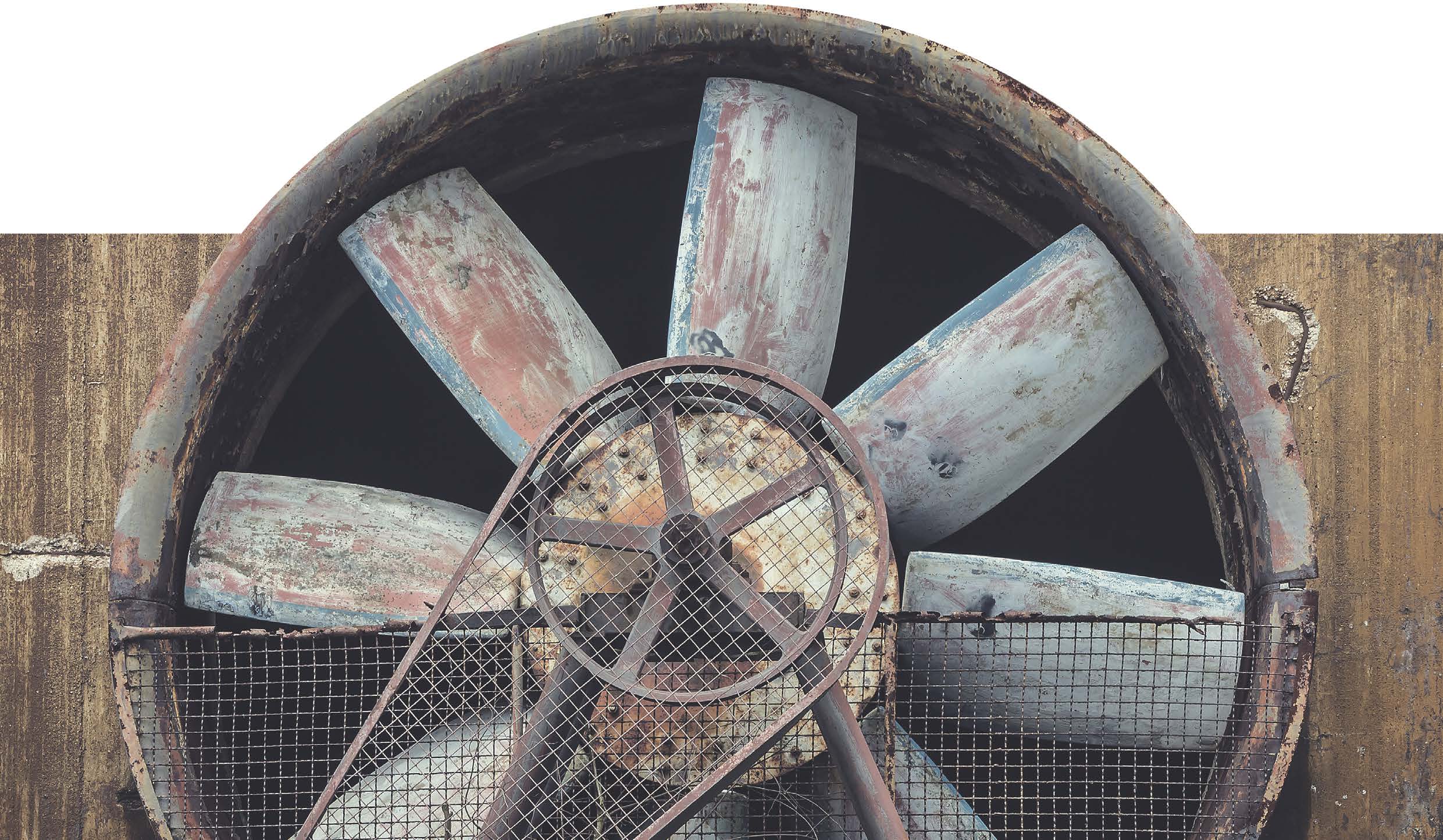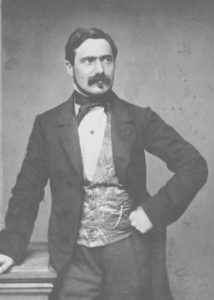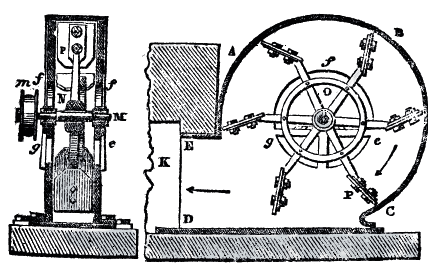Healthy idea, i.e. what were the origins of ventilation. Brief history of ventilation – part II

In the previous article we explained how the problem of unpleasant smells and the growing demand for ventilation was handled by the Egyptians, Romans and then by the Englishmen. Today, let’s take a few steps forward and see who had a significant impact on the development of ventilation and what it had to go through to become what we know today.
Some of the researchers claim that the 19th century was the beginning of modern times and a period of great progress. But did the economic growth and general quality of life improvement also apply to ventilation and its development?
Before we answer this question, let’s go back to the more distant past. For hundreds of years it was believed that a human being was the only source of air pollution. In the 19th century, researchers noticed that a human being exhaled many toxic substances, such as carbon dioxide. As the years went by, the interest in hygiene grew. Basic air parameters that affect human health, such as humidity and pollution with gases and dust, were determined.

Who had the greatest impact on the development of ventilation? The answer might surprise you
In the 19th century, people experienced many severe diseases that often turned out to be lethal. Diseases transmitted by inhalation and by direct contact with the infected person killed thousands of people. The main purpose of ventilation was to reduce the concentration of microorganisms in the air to limit the risk of contracting a disease. At that time it was believed that ventilation protected against all viruses and microorganisms. Max von Pettenkofer, a German hygienist, discredited that theory and left the future generations with a device measuring the contamination with other harmful and unpleasant substances (it will be described below). As the years went by, the beliefs of scholars gave way to new inventions in the areas of ventilation and air infiltration. It turned out that hazardous pathogens transmitted by inhalation were a different matter and it should not be connected with the quantity of carbon dioxide in a room. However, it does not change the fact that its quantity in the air affects our well-being.

Max von Pettenkofer; źródło: Wikipedia
The history of ventilation and carbon dioxide
Let’s have a closer look at the content of carbon dioxide in the air. First air quality tests were performed by Antoine Lavoisier. This researcher claimed that an increase of the carbon dioxide concentration to 3% might be harmful. However, the first key recommendations for air quality, and in particular for the maximum acceptable CO2 concentration of 0.1%, were formulated by Max von Pettenkofer (mentioned above) in 1858. He proved that low quantities of carbon dioxide were not harmful to health. He found that the CO2 content in the air was the measure of air pollution with other and quite frequently unpleasant substances. This idea was closer to the modern concepts than earlier findings.
Over time other determinants of air quality were identified. One Danish scientist, Povl Ole Fanger, studied feelings of people in relation to conditions inside rooms. It turned out that at a given temperature the quantity of steam in the air had a significant impact on the well-being of a person staying in the room. The optimum air humidity was conditioned to a large extent by temperature. The research on the carbon dioxide concentration and the relative humidity was included in the standards that apply in most of the countries around the world.
How did the scientific research affect the production of ventilation devices?
At the turn of the 19th and 20th century, The American Society of Heating, Refrigerating and Air-Conditioning Engineers (ASHRAE) published the results of research which indicated the minimum air flow rate for indoor ventilation systems. This was the very first data from a series of research increasingly similar to those that apply today. Apart from the research and assumptions of von Pettenkofer, there were also other claims regarding indoor air. More recent research carried out by Constantin Prodromos Yaglou at the Harvard University cast a new light on the production of ventilation devices. Once again, the scientists turned their attention to the well-being of a person staying in the room. This time, however, they accounted for the emission of pollutants of human origin and tobacco. The research presented the impact of the cubic volume of the room on the desired ventilation rate. None of the scientists, i.e. neither Yaglou, nor von Pettenkofer, analysed the impact of sources of air pollutants other than those of human origin.
Even though the scholars could not agree on the harmful air conditions and their impact on the human body, several inventions were created over the 19th and 20th century. Those are still in use today. The examples of such devices include the finned tube heaters, fabric air filters and fans driven by motors that enabled performance control.
At the beginning of the 20th century the German publishing house Hütte in their guidebook Des Ingenieurs Taschenbuch presented six types of rotor fans with different shapes and pitches of blades. Both small and large rotor fans were constructed. They were designed to ventilate mines or ships. The industry focused mainly on the production of this type of devices for a reason. During the First World War ships were widely used both by the United States and Germany. The manufacturers of rotor fans and ship structures mainly focused on the war industry. This way they laid the foundations for Capell type fans by R.W. Dinnendahl A.G. with the rotor diameter from 250 to 1,000 mm. These devices had the capacity from 600 to 18,000 m3/h. The largest model of the double suction mine fan had an exceptional capacity of 972,000 m3/h.
In the 20s of the 20th century first designs of prefabricated boxes appeared. They were made of metal sheet and equipped with heaters and a humidifier. First attempts at temperature and humidity control also took place at the time. Despite technical limitations, the devices constructed in the period around the First World War were of high standards. In Poland, the first ventilation system was installed in the Polish Theatre in Warsaw in 1911. The system supplied fresh air under the grates of chairs inside the room. It was replaced after about 40 years.

Development of ventilation and war times – new inventions and improvements
In the interwar period, ventilation systems were installed in public buildings in the most developed countries. Ventilation systems were installed mainly in theatres, cinemas and other entertainment venues. At the end of the interwar period the following devices were created: separating filters with the Raschig rings, axial flow fans and wall mounted heating and ventilation units by Thermon.
Soon enough, i.e. after 1945, because of the development of cities, high-rise and large-volume buildings, ventilation system designers faced another challenges. New swimming pools, sports halls, offices, hotels and car parks required high efficiency air conditioning and ventilation. Zone systems with various air parameters were thus developed. With the end of military actions after World War II electrical engineering flourished. This in turn led to the improvement of ventilation and refrigerating engineering. Unfortunately, Poland suffered extensive destruction and dealt with serious problems. Ventilation became less important. However, despite the fact that practically only natural ventilation was used, scientists carried out research on air movements, measured the efficiency of ventilation devices and analysed various measuring techniques.
The history of ventilation involves many tests, disproved claims and scientific publications. With the development of the construction industry, architecture and new technologies, ventilation became more and more automated. The knowledge on how to create and use technology in architecture led to the invention and development of intelligent systems which not only affect the well-being of people occupying tall and large buildings but also protect structures against heavy accumulation of smoke in case of fire. Thanks to the development, research and contribution of many scholars and today’s specialists we can be healthy and feel safe. And ventilation, although it cannot be seen, will always be on the front line when it comes to maintaining healthy air in buildings.




